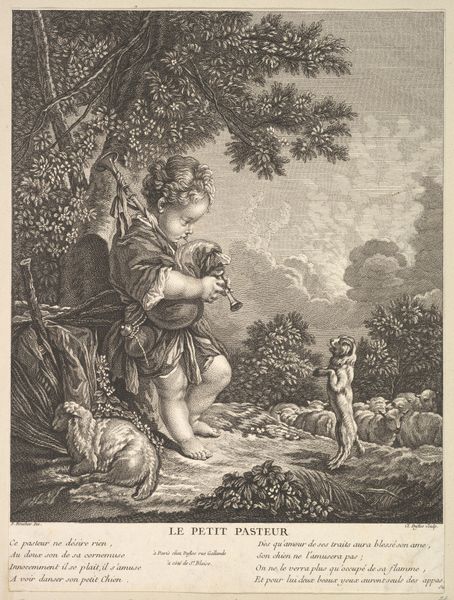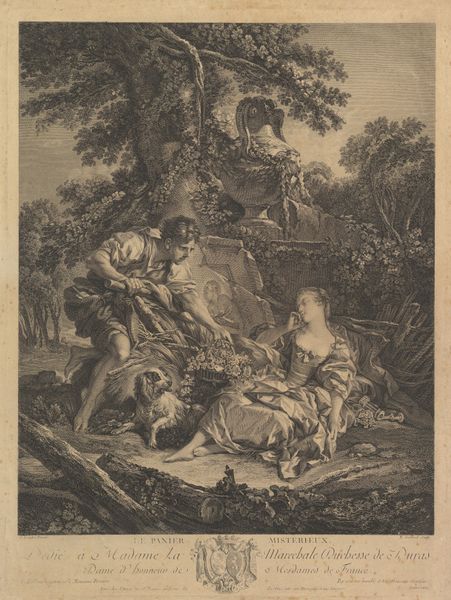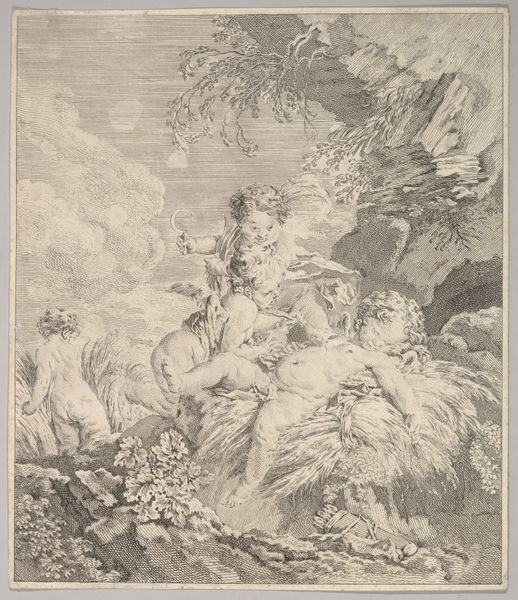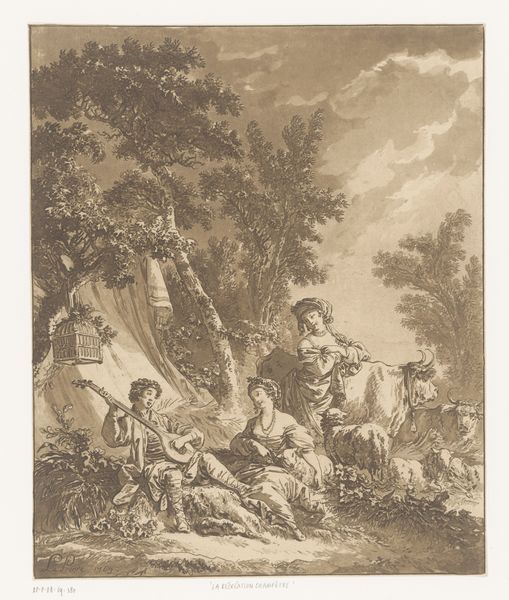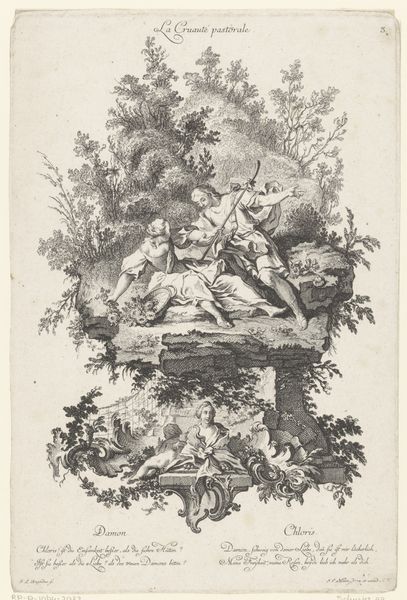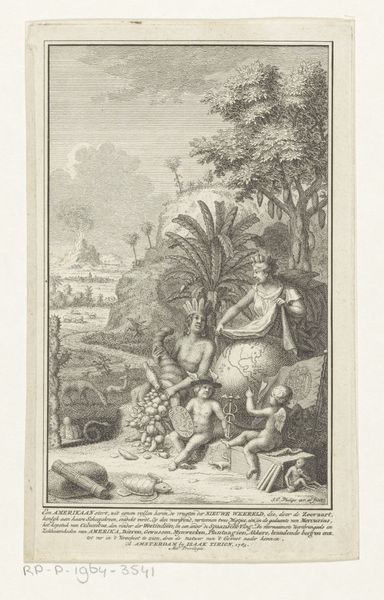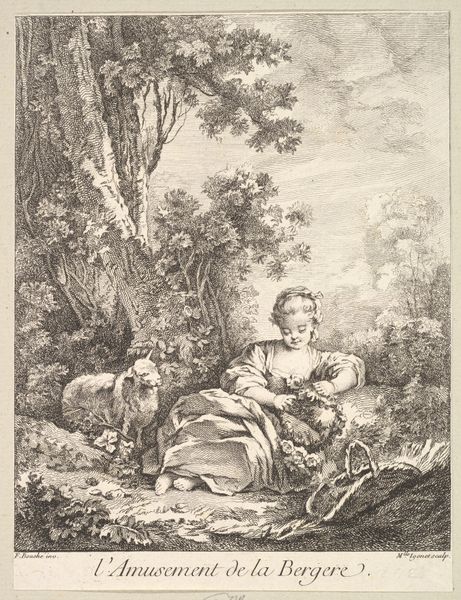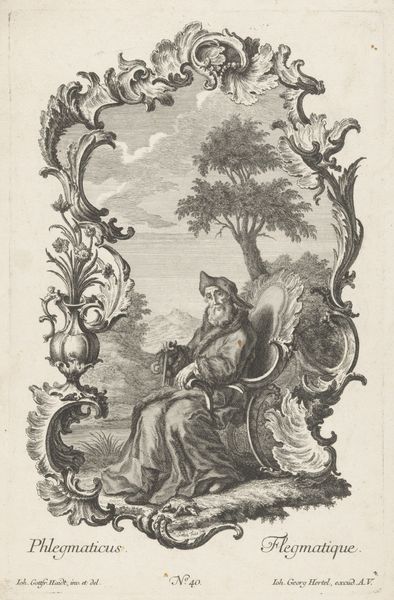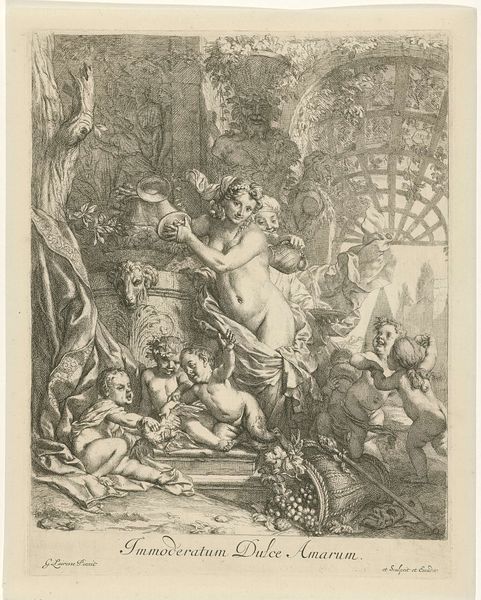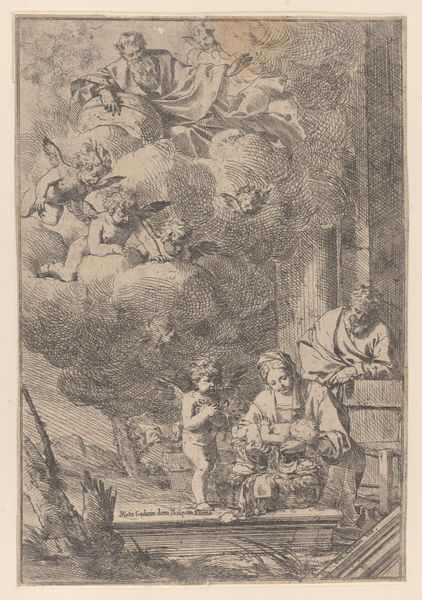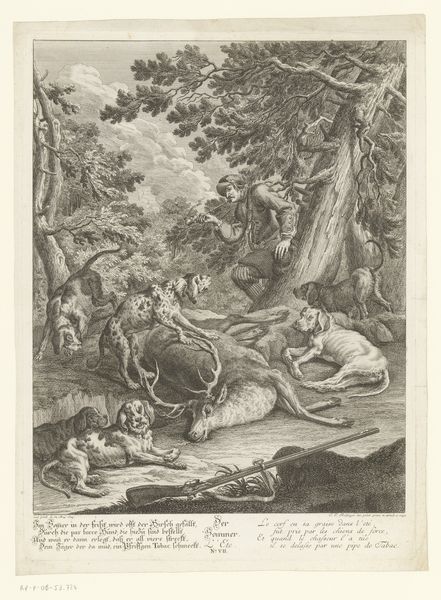
drawing, print, engraving
#
portrait
#
drawing
# print
#
bird
#
child
#
history-painting
#
engraving
#
rococo
Dimensions: Sheet (trimmed): 10 9/16 in. × 8 in. (26.9 × 20.3 cm)
Copyright: Public Domain
Editor: So, here we have "The Poet," an engraving done between 1748 and 1758 by Claude Augustin Duflos le Jeune. It depicts a cherubic child with a bird and a serene landscape. What strikes me is the playful and almost performative quality. It feels staged. What are your thoughts? Curator: That staged feeling is very telling! Think about the cultural context of Rococo art. It flourished in a time of aristocratic patronage and elaborate court life. This print, made for wider distribution, reflects and reinforces those values. Note the emphasis on leisure, beauty, and idyllic fantasy. This is not necessarily an image of "authentic" childhood, but one carefully constructed to appeal to its elite audience. Consider how prints like these circulated ideals, shaping both artistic tastes and social aspirations. The museum here is part of the ongoing circulation and study of those aspirational tastes. Editor: That’s a great point. So, it's less about the poet, and more about projecting a certain lifestyle and idea of artistic genius back onto potential consumers? Curator: Exactly. How does the landscape contribute to that? Think about the choices made in composition. Is this a naturalistic rendering of the outdoors? Editor: No, definitely not. It's idealized – swans gliding on a still pond, everything perfectly balanced. Even the text beneath feels ornamental, a further refinement of reality. Curator: And how does placing the figure – the future Poet, if you will – within that specific setting shape the meaning? Think about how it invites the viewer into a world of cultured gentility and learned pursuits. Editor: I hadn't thought about it that way. So it is a promotion, not of an artist, but of a worldview and of cultural capital? Curator: Precisely. Studying such images gives us invaluable insights into the society that produced and consumed them. Museums are places where these socio-political contexts can be analyzed in an ongoing way. Editor: This really sheds light on how even seemingly innocent imagery can be deeply connected to power structures and social aspirations. Thanks!
Comments
No comments
Be the first to comment and join the conversation on the ultimate creative platform.

